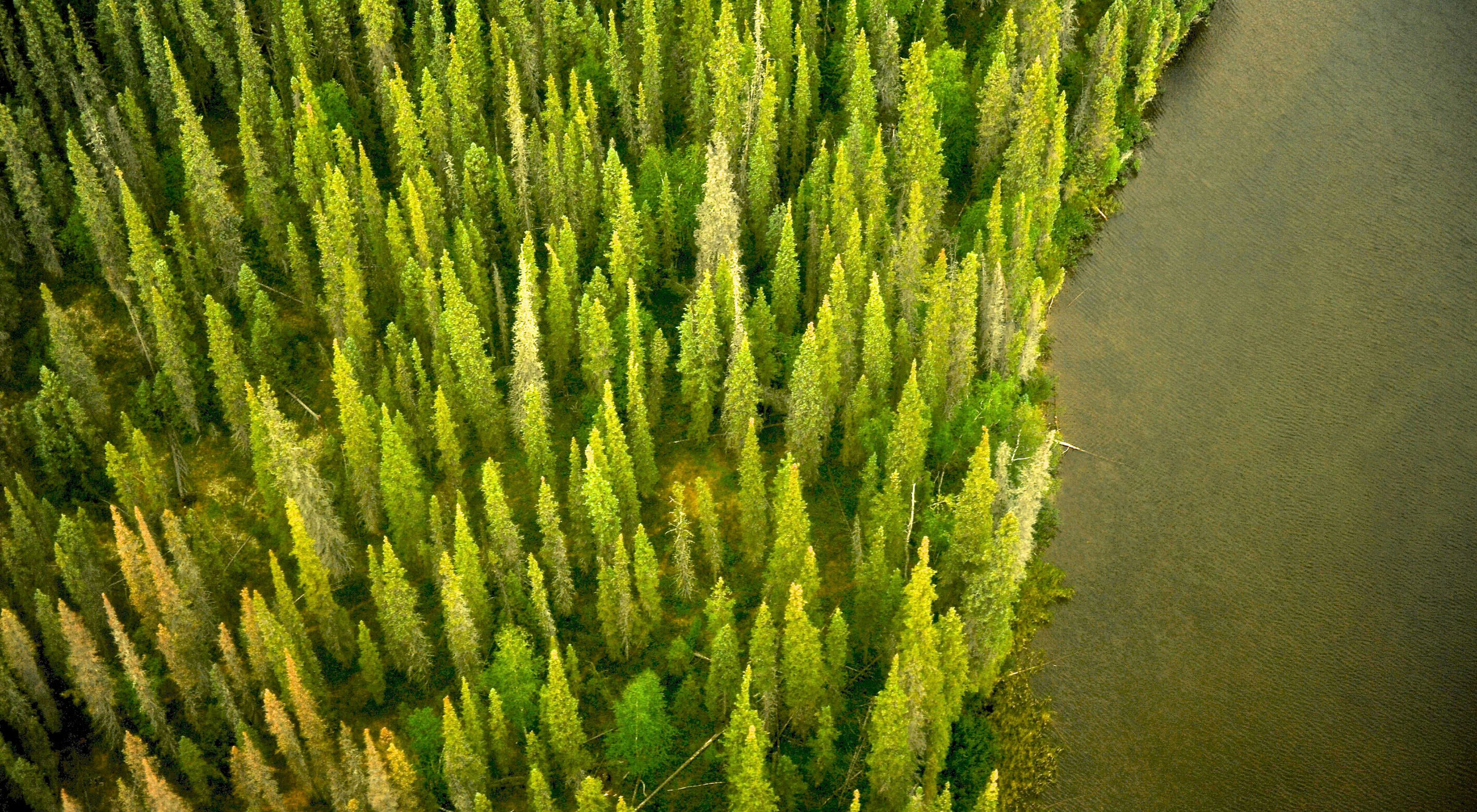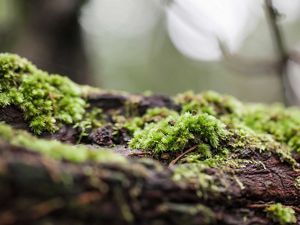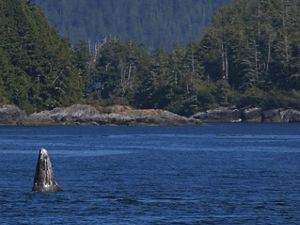Primer on Forest Carbon
How Canada’s Boreal Forest can be a powerful solution for climate change.
What is forest carbon and why is it so important?
Carbon is one of the building blocks for all life on Earth. It is all around us—in the air we breathe, in the food we eat, and in many of the fuels that power our lives. Combined with oxygen, it becomes carbon dioxide (CO2) and enters the great cycle of life when it is breathed in by plants and other organisms.
Burning fossil fuels, like coal or oil, releases CO2 and other greenhouse gases into the atmosphere. The same thing happens when forests are cut for forestry or agriculture. These activities increase climate change because elevated levels of greenhouse gases circulating the Earth trap more sunlight and make the planet warmer.
As the Earth’s largest above-ground "pool" of carbon, forests play a critical role in regulating greenhouse gases in the atmosphere. How humans use forests impacts whether forests are sources (releasing carbon into the atmosphere) or sinks (absorbing carbon from the atmosphere). Because of this, forests can be a natural ally against rising emissions and slowing climate change. Spanning 1.3 billion acres, the Boreal Forest is the Earth's largest terrestrial carbon storehouse, storing 208 billion tons of carbon, or 11% of the world’s total.
Why rely on forests at all in terms of climate change mitigation?
There is certainly a lot we can do to improve energy efficiency or develop clean fuels. But forests take in billions of tons of human-released greenhouse gases every year, accounting for roughly 1/3 of CO2 emissions from burning of fossil fuels and loss of forests around the world.
Conserving forests like Canada’s Boreal is a win-win solution because we can help mitigate climate change while providing many other benefits to humans and nature, such as filtering water and providing habitat for an amazing diversity and abundance of animals and plants.
Don't trees release carbon into the atmosphere as they get old?
Forests can be an effective sink for carbon, even when they’re old. This is especially the case for forests that have large, long-lived trees and are relatively free of pests and forest fires, such as tropical or temperate rainforests.
On average, global forests that are 200-years-old or older sequester about seven tons of carbon dioxide (equivalent) per hectare per year, roughly equivalent to what one and a half cars emit in one year. Coastal rainforests are real performers in this regard and can remove as much as 22 tons of CO2 per hectare annually. That’s about the same CO2 emitted from heating 10 typical west-coast homes for one year. Old forests in Canada’s Boreal can continue to sequester CO2 well into their old-growth stage, or greater than 100-years-old.
Quote: Ronnie Drever
"Nature United works in the Boreal with First Nations, governments and industries to find ways for carbon markets to provide revenue for forest stewardship."
Is it better to log old forests so young trees can absorb carbon?
That depends on whether the forest is emitting or releasing greenhouse gases. Logging of forests typically requires burning of fossil fuels to run chainsaws and machinery as well as transport the logs. Also, converting an old forest to a stand of young trees creates greenhouse gas emissions for decades after logging from on-site decomposition of forest soils and logging residue. A benefit to the atmosphere is only realized decades later, once the stand has grown and sequestered all the emissions created by logging.
So logging old forests to make way for young trees to mitigate climate change only makes sense for forests that are releasing more greenhouse gasses than they’re storing—in other words, forests that are full of dying trees or have been attacked by insects.
But in the Boreal, where most of the carbon is stored in the soils and peatlands, Nature United's strategy involves conserving forests for a range of benefits, including the climate, by keeping trees standing and carbon in the ground.
What about forest fires and other risks?
Forest fires can cause large emissions of greenhouse gases. This is especially a concern in Canada's Boreal Forest, where conifer forests are intermixed with vast peat bogs, which also burn and can release high amounts of mercury, with important potential consequences in terms of human health. That’s why sustainable management practices and land-use plans are so critical.
China, for instance, transformed its forests during 1990s from a carbon source to a sink by systematically planting new forests and allowing old forests to grow back. These practices offset about 20% of China’s fossil fuel emissions in 2000.
Similarly, the deciduous forests of eastern U.S. are known as a large sink, absorbing 500 million tons of CO2 per year. This is because these forests have been growing back since the 1920s in areas once cleared for farms, there are lower levels of logging, and forest fires are being suppressed.

How can we help reduce climate change with forest management?
Studies show the best way to sequester carbon in forests is by leaving healthy trees standing and protecting them from natural disturbances such as fire or insects. The next best strategy is sustainable logging, if the harvested wood replaces alternatives, such as cement or steel.
When we extend the “rotations,” or time between one harvest to the next and keep more trees standing in harvested areas or as buffers around streams, we not only store more carbon but we also improve long-term timber yields. Improved forest management for old forests and low-impact logging practices are, generally speaking, carbon positive.
Our knowledge is still evolving on what constitutes effective management of forests for a climate benefit. Lots of factors affect whether a forest cools or warms our planet. A big one is the albedo effect, which refers to how a given forest reflects or absorbs sunlight and heat energy. Albedo is different for coniferous versus deciduous forests and in northern forests varies with the amount of snow that covers the ground annually.
Given all this complexity, there's no single best strategy for achieving a climate benefit. A mix of strategies including forest protection, sustainable harvest and substitution of more energy-intensive products with wood is a good start. In the Boreal, Nature United helps bring together all the voices that should be heard in order to realize the full value of healthy forests. We work with First Nations, governments and industries to measure the climate benefit of forest protection and sustainable management and find ways for carbon markets to provide revenue for forest stewardship.





